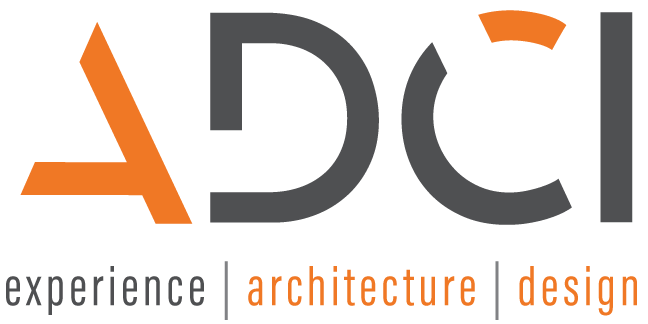t ADCI, we believe in staying at the forefront of technology to better serve our clients. In recent years, this value has led us to explore expanded capabilities provided by virtual reality (VR) and augmented reality (AR) when it comes to rendering a building during the design stage.
Bringing Designs to Life with Virtual Reality
Virtual reality allows us to create stunning 3D virtual tours, providing clients with a remarkable sense of space and a unique perspective on their future building. With VR, clients can navigate through the virtual model by simply clicking on desired locations, granting them the freedom to explore every corner of the design. By incorporating VR headsets, we enhance the experience further, creating an illusion that the client is physically present within the space. This immersive approach assists clients in understanding spatial relationships, visualizing adjacencies, and comprehending the overall design concept.

Similarly, augmented reality offers clients an immersive and interactive experience, enabling them to explore and understand architectural designs like never before. While virtual reality puts the viewer “into” the building – one that hasn’t even broken ground yet, - augmented reality allows the building plan to “jump” off the page. Both are remarkable advancements in the field of architecture and exciting features of today’s ever-evolving technological landscape.
Empowering Clients through Immersive Experiences
One of the significant advantages of employing VR and AR technologies in architectural visualization is the ability to help clients overcome visualization challenges. Many individuals struggle to connect architectural plans and renderings with physical spaces. However, VR technology bridges this gap by allowing clients to immerse themselves in the design, gaining a comprehensive understanding of the proposed structure.

By exploring the virtual environment, clients can visualize how different elements interact with each other and experience the flow of spaces. This level of engagement empowers them to make informed decisions, offering valuable feedback and identifying potential modifications before construction begins. Furthermore, VR enables clients to evaluate design choices comprehensively, from the impact of a particular carpet color to the integration of architectural elements throughout the building.
Enhanced Collaboration and Communication
VR and AR solutions not only benefit clients but also foster improved collaboration and communication among project stakeholders. For public clients, such as those involved in referendums or multi-shareholder endeavors, these technologies serve as valuable sales tools. Simply by sharing a link or a QR code, stakeholders can access the 3D rendering on their mobile devices or computers, providing them with an immersive experience and enabling them to visualize the future building accurately.

The versatility of AR further enhances communication during the design process. With AR, clients can use printed documents or maps to visualize how the building will look within its real-world surroundings. By overlaying 3D models onto the site, clients can gain a better understanding of the building's placement and its relationship with the environment. This approach proves particularly helpful for exterior layouts, allowing clients to examine designs from various angles and even perform cross-section analysis to grasp the internal arrangement.
Augmented reality and virtual reality technologies have opened up new horizons both for design teams and for our clients. By leveraging these powerful tools, we can expand on the traditional renderings and plans, providing clients with immersive, interactive experiences that facilitate a deeper understanding of architectural designs. The combination of VR and AR empowers clients to visualize spaces, evaluate design choices, and actively participate in the decision-making process, resulting in more satisfied clients and improved project outcomes. As technology continues to advance, we are excited to explore and learn from these new possibilities.




